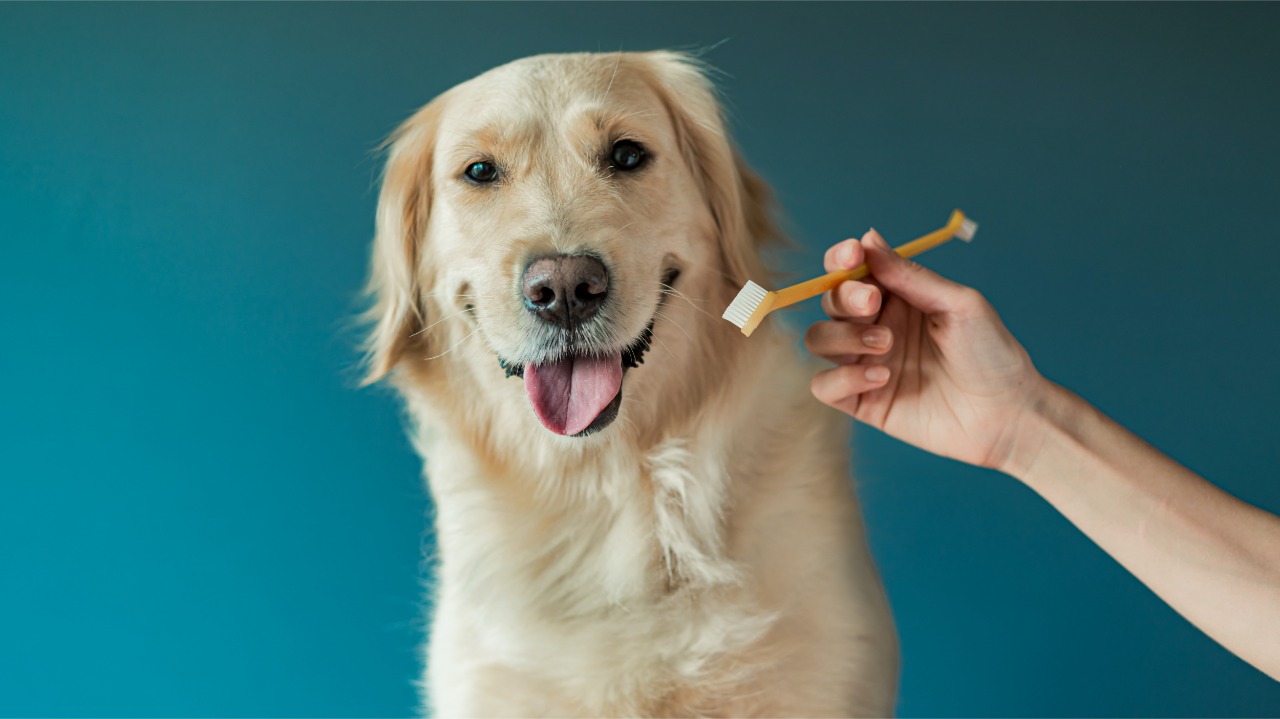Tails
Making pet parenting easy

Why is dental health important in pets?
This entry was posted on 2021-01-08.
Dental health is critical for the overall health and wellbeing of your pet because it can have serious consequences if left untreated. It is one of the most common medical conditions seen by veterinarians and statistically by the age of 3 years about 80% of dogs will have some form of it.
Unfortunately, most pets are very good at hiding disease and for this reason it often goes unnoticed or we see it, but don’t think it is causing any problems, until it is really bad. It is up to pet owners, with the help of vets, to help prevent and treat this silent but painful disease, because most often pets won’t let us know anything is wrong.
Is dental disease in pets the same as in people?
It is true that dogs can get many of the same oral diseases as people, but this is not commonly the case. In people the most common causes of dental disease include tooth decay and cavities, whereas in pets the most common causes of dental disease are peridontal disease and fractured teeth. Tooth decay is in fact rare in pets and occurs in less that 10% of all dental problems.
What is periodontal disease or peridontitis?
Peridontal disease is a term used to describe infection and inflammation of the tissues surrounding the tooth, known as the periodontium. The periodontium is made up of 4 tissues namely the gingiva (or gums), the cementum (which is hard connective tissue that covers the root of the tooth), the periodontal ligament (a ligament between the tooth root and the bone) and the alveolar bone (a thick ridge of bone in the jaw that contain the tooth sockets).
Periodontal disease starts off with infection and inflammation of the gingiva (or gums) known as gingivitis caused by bacteria. This infection and inflammation then spreads into the cementum and periodontal ligament and eventually the alveolar bone, destroying these structures and causes teeth to loosen and fall out over time.
Signs of dental disease include: bad breath, discoloured teeth, red or swollen gums, painful or bleeding mouth, broken and loose teeth, drooling, and eventually the inability to eat or drink in really severe cases.
Listed below are a few reasons we need to pay attention to our pets mouths:
Bad breath or ‘doggy breath’ is in fact not normal for pets and is most often caused by dental disease or peridontitis
Dental disease is painful for pets and is often left untreated
Dental disease or peridontal disease affects the structures around the teeth, if these become infected and inflammed or damaged then the teeth become lose and eventually fall out.
Dental disease affects other organs in your pet’s body such as the kidneys, liver and heart. Bacteria from the mouth can spread via the bloodstream and become lodged in other places of the body, causing other severe diseases.
Most pets develop dental disease, and therefor it is important to be aware of it and treat it preventatively to keep your pet healthy.
How does it all start?
Remember that your pet’s mouth is home to thousands of bacteria. These can multiply and form an invisible layer called plaque which forms something called a biofilm. A biofilm is a thin slimy layer of bacteria structured in such a way that they are very resistant to removal and antibiotics tend not to be able to access them. Some plaque is naturally removed by your pet’s rough tongue and chewing habits, but not all.
Plaque left on a tooth’s surface thickens and mineralizes into tartar. Because tartar is a rough material, it then attracts more plaque to ‘stick’ to the tooth and eventually all this bacteria causes infection and inflammation of the gingiva (or gums). The first stage of dental disease in pets is always gingivitis and is the only truly reversible stage.
What can we do to prevent this disease?
The best way to control plaque and prevent a biofilm from forming, is to brush your pet’s teeth daily. But this is not always an easy task and for this reason one should ideally always start when your pet is young. Use a toothbrush and toothpaste that is specifically formulated for pets and can be swallowed. Never use human toothpaste in pets as some of the ingredients such as xylitol can be very toxic.
There are dog chews and toys available that can also help decrease plaque buildup, but choose them carefully, as not to damage any teeth. Some specially formulated dental diets can also assist in mechanically removing plaque. And water additives for dental health are also available.
It is important to remember that the rate at which plaque develops and mineralizes is not the same for all pet’s and therefore some animals are more prone to developing dental disease.
Once plaque has turned into tartar it is almost impossible to remove with brushing, chews, toys or food and professional scaling and polishing under general anaesthesia is needed. Your veterinarian will guide you on when this is needed. Teeth are generally checked once a year as part of your pet’s annual check-up and vaccinations. Most pets will need to have their teeth examined, scaled and polished under anaesthesia at some stage of their lives to keep them healthy, happy and thriving.


